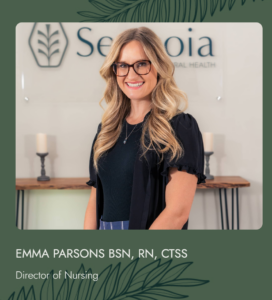Interventional Care


We notice that you are visiting us from . This site only services US-based visitors. Would you like to visit the site that is appropriate for your location?

Behavioral healthcare represents an often overlooked and underrepresented area in healthcare, treating crucial populations experiencing issues like substance abuse and psychiatric disorders. Mental health issues are widespread and often overwhelming, affecting 26% of adults over the age of 18 (1). Even though the opioid crisis is being addressed, the sad truth is that the US population still consumes 80% of the world supply of opiates (2) and there is a huge need for treatment and recovery centers that specialize in both mental health and addiction recovery specialties. And, while most people may have a good idea of just how important infection control is in acute care, it is also a pillar of care in the behavioral health setting.
To more fully understand the challenges of infection prevention in this setting, PDI Clinical Science Liaison, Amanda Thornton, RN, MSN, CIC, VA-BC, sat down with Emma Parsons, BSN, RN, CTSS, owner and Director of Nursing of Sequoia Behavioral Health (3) an inpatient residential behavioral health program located in Mesa, Arizona, to tackle the topic

Emma Parsons, BSN, RN, CTSS, Sequoia Behavioral Health
Q. Thanks for joining us today to discuss infection control in behavioral health settings. Can you tell us a little about your facility and the types of patients you serve?
Parsons: Thank you for having me today! Sequoia Behavioral Health is an inpatient 30-day residential treatment program that helps individuals experiencing a wide variety of mental health disorders including addictions and psychiatric disorders.
Q. What types of issues do your client’s typically experience?
Parsons: Clients at Sequoia Behavioral Health typically are suffering from psychiatric disorders. We often see people with depressive disorders, anxiety disorders, complex PSTD, mood disorders, sleep disorders, personality disorders, and substance abuse disorders. We apply a trauma-informed care model, meaning that we require our staff to be extremely knowledgeable about how traumatic experiences impact an individual’s mental health and wellbeing, and our treatment interventions are based on this foundational component.
Q. Your facility is inpatient, meaning the people you are treating stay at the facility. This must pose some infection control challenges that are different from what most people think of when they think of mental health treatment- such as outpatient therapy. What are some of the infection control challenges you face within your facility?
Parsons: Indeed, inpatient care is vastly different from an outpatient clinic (which we also have),and requires a holistic approach that includes a solid infection control program that prevents the transmission of diseases. Inpatient infection control for a behavioral health program can be just as rigorous if not more so than other inpatient settings, and we have a federal and state code of regulations we must follow. Populations experiencing behavioral health challenges pose some of the highest risks for acquiring infections, especially infections like HIV, tuberculosis, and sexually transmitted infections. Our clients are especially vulnerable to infection due to the challenges that they face in their daily lives. For example, a person experiencing major depressive disorder often experiences major difficulty with keeping themselves or their environments clean as a result of their condition. We also see secondary infections like pneumonia or infected wounds as a result of an individual’s inability to care for themselves. For individuals with drug addiction, exposure to hepatitis C or HIV is commonplace, and immunosuppressed patients pose unique challenges. We truly have to prioritize infection control from the time the client admits and even after they discharge with us. Another real challenge is that anytime you have a lot of people living in close quarters together in a congregate living setting, there is risk for passing infections around, especially during flu and cold season.
Q. What things do you do to help protect your patients?
Parsons: At Sequoia we have screening assessments that we complete on admission, as well as ongoing surveillance for any suspected infections. We also have a rigorous cleaning and disinfecting program, which requires healthcare grade disinfectants as well as a frequent cleaning schedule. We employ a trained and certified Infection Preventionist to oversee our infection control program and all its components.
Q. When you say ‘Healthcare grade disinfectant’ what do you mean by that?
Parsons: My Infection Preventionist could explain it better, but it basically means you must use an EPA approved disinfectant that is appropriate for inpatient healthcare facilities (4). This is usually stronger than the average disinfectant you find in the isles of the grocery store. The disinfectant we use here has to kill all kinds of pathogens including bloodborne pathogens like HIV and Hepatitis-B but it also must kill pathogens that are frequently associated with healthcare infections, like MRSA and VRE. And of course, it has to kill COVID, Influenza, and other respiratory pathogens.
Q. What is the disinfectant you use?
Parsons: We use PDI’s Super Sani-Cloth wipes (The “Purple-top”), as well as their bleach wipe. We find that Super-Sani is a great product because it is easy and quick to use, has a lot of pathogen kill-claims, and does not have a bad or lingering smell. Even the bleach product smells clean – kind of like when you go to a swimming pool. We also use their Easy Screen product to clean anything digital, like phones and tablets, which we find to be very helpful, especially for when we complete neurofeedback with clients.
Q. What is neurofeedback?
Parsons: Neurofeedback is essentially an electroencephalogram which reads the brain waves of the client and evaluates how their performance may be impacting their mental health. Observing how the activity in the brain changes based on positive or negative feedback allows you to gain control of stress responses you might have thought weren’t in your control. The EEG software reads your brainwaves and then provides audio and visual feedback so your brain can better understand how it is functioning. Neurofeedback is associated with dramatic positive real-life outcomes. In the context of substance abuse, studies have shown that more sessions of neurofeedback therapy lead to considerably fewer overdose deaths (5).
Q. What other challenges have you faced in relation to infection control?
Parsons: Since our inpatient setting is home-like, we must maintain a quality oversight program that routinely cleans and disinfects shared items and spaces, as well as upholstery and furniture. It is important to maintain the comfortable home-like setting in our facility for the comfort of our clients, but we also have to ensure that we are providing care in a clean and sanitary environment. That is a hard balancing act.
Q. Mental health is so important, do you find that there is less stigma now for people to get help than there was in the past?
Parsons: Yes and no. Even ten years ago there was more stigma and fear for people who were seeking mental health treatment that they would not be able to be treated, or would be terrified of involuntary hospitalization. But more and more people are seeing and realizing through public health campaigns and facilities like ours that there is no reason not to address and treat your mental health problems anymore, and you do not have to suffer in silence. Our program takes anyone from across the United States, and most often times insurance will pay for the treatment, whereas in the past they did not always cover it. On the other hand, there is still a lot of fear, especially in our communities, of people experiencing mental health crises. One of the missions of Sequoia Behavioral Health is community integration and public education. Healing occurs in community, not in solitude.